

|
|
|


|
|
1/18 Scale Electric Drift Car:
HPI Micro RS4 Drift - Mazda RX-7 FD3S - # 617 / # 646 / # 636 - Radio Controlled ModelHistory and Info for the HPI Micro RS4 Drift:
Introduced by HPI (Hobby Products International) in 2007, the Mazda RX-7 FD3S, based on the Micro RS4 Drift Car chassis, was available as an unassembled kit - # 617 - or factory assembled RTR - # 646 / # 636. The model was designed to accept standard sized 180 Motors, Steering Servos, Receivers and ESC, and run times up to 40 minutes could be achieved with 4 x AA or AAA Batteries. A number of other bodyshell options were available (Check out our HPI Archive).
▼ Scroll Down for More Images ▼
|








|
|
|

★ HPI Racing Micro RS4 Drift Chassis ★
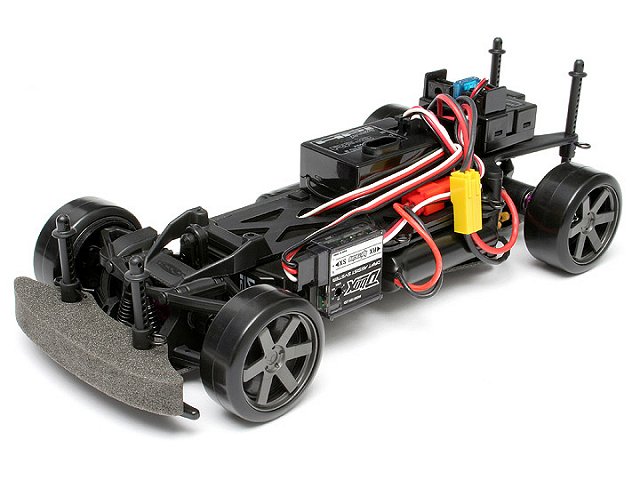
★ HPI Racing Micro RS4 Drift ★
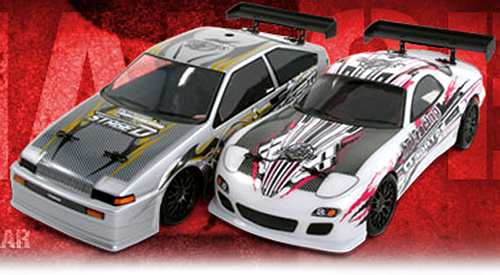
★ HPI Racing Micro RS4 Drift Chassis ★
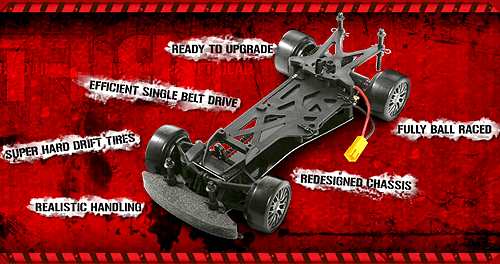
★ HPI Micro RS4 Drift - Mazda RX-7 FD3S Chassis ★
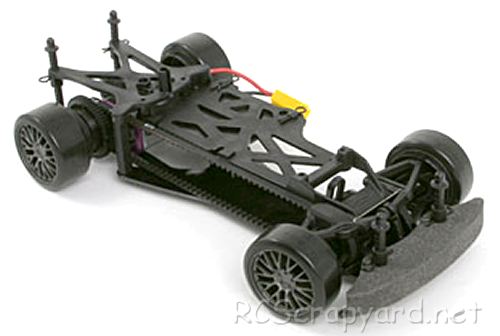
★ HPI Micro RS4 Drift - Mazda RX-7 FD3S Chassis ★
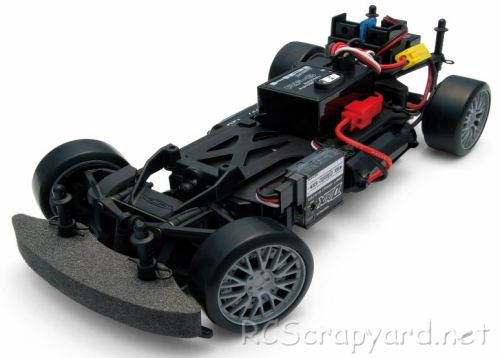
★ HPI Micro RS4 Drift - Mazda RX-7 FD3S Chassis ★
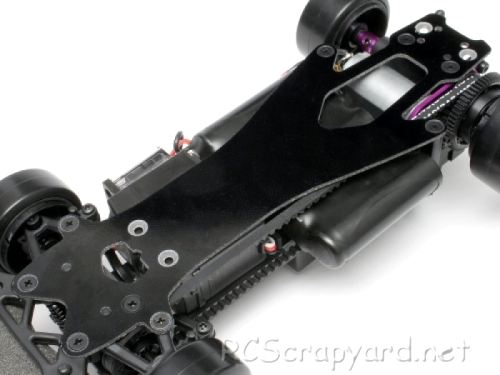
★ HPI Micro RS4 Drift - Mazda RX-7 FD3S Chassis ★
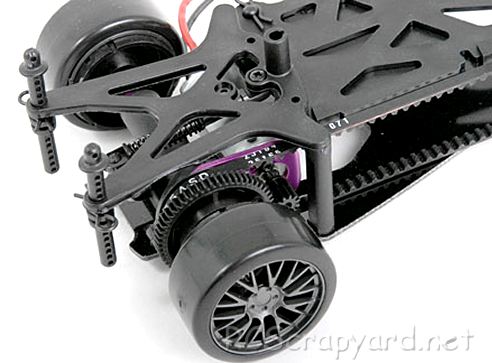
★ HPI Micro RS4 Drift - Mazda RX-7 FD3S Chassis ★
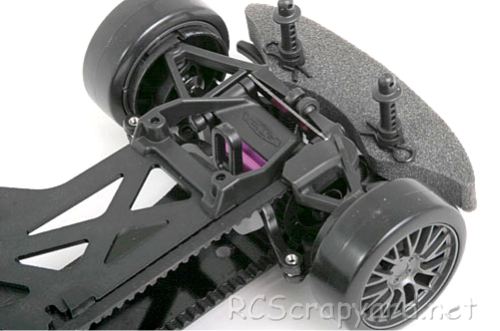
★ HPI Micro RS4 Drift - Mazda RX-7 FD3S Chassis ★
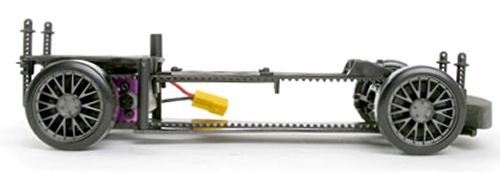
|
Buying a Used HPI Micro RS4 Drift Car (and What to look for)
Make a General Visual Inspection
Check the Body-Shell
If the body shell of your HPI Micro RS4 is broken, ripped or damaged in any way, this can be easily repaired with rubber solution glue. Also, for added protection and if available for your Micro RS4 model, fit an under guard to stop dirt and gravel entering the chassis. Drive Shafts and Turnbuckles
Examine the Drive System
The gearbox of your used Drift Car should be opened up to check for gear wear and lubrication. A thin coat of grease is often used on internal gears and although this is fine for basic running around on the road, if you intend to race your Drift Car at a higher level, this should be removed and replaced with racing oil (ZX1 or Teflon Oil). Of course, this should be reapplied after each race meeting. Pinions and Spur Gears
Don't Neglect the Ball-Joints
Ball joints always cause problems. For top level Electric Drift Car racing, the plastic ball connectors should be checked and if deemed necessary changed after every meeting. A simple thing like a loose fitting connector popping off could easily end your race, so better safe than sorry. Steering Servo and Servo-Saver
Stabilizers
If body roll on your HPI Micro RS4 is a problem, handling can be improved with the use of stabilizers, anti roll or sway bars, stiffer tuning springs and, or, thicker silicone oil in the dampers. Don't Forget those Bearings
▼ Scroll Down for More Articles and Advice ▼
Or, check out our RC Model Car Setup Guide
|
|
Manufacturers and Brands Catalogued, Listed and Reviewed by RC-Scrapyard.
At present, the RC Model Manufacturers, Brands and Distributors covered by us are: ABC Hobby, Academy, Acme Racing, Agama Racing, Amewi, Ansmann Racing, ARRMA, Team Associated, Atomic RC, Axial, AYK, Bolink, BSD Racing, Capricorn, Carisma, Carson, Caster Racing, Cen, Corally, Custom Works, Durango, Duratrax, ECX - Electrix, Exceed RC, FG Modellsport, FS-Racing, FTX, Fujimi, Gmade, GS-Racing, Harm, HBX, Helion, Heng Long, Himoto Racing, Hirobo, Hitari, Hobao, Hong-Nor, Hot Bodies, HPI, HSP, Intech, Integy, Jamara, JQ Products, Kawada, Kyosho, Losi, LRP, Maisto, Mardave, Marui, Maverick, MCD Racing, Megatech, Mugen, New Bright, Nichimo, Nikko, Nkok, Ofna, Pro-Pulse, Protech, PTI, RC4WD, Redcat Racing, RJ-Speed, Robitronic, Schumacher, Seben, Serpent, Smartech, Sportwerks, Step-Up, Tamiya, Team-C Racing, Team Magic, Thunder Tiger, Tomy, Top Racing, Traxxas, Trinity, Tyco, Vaterra RC, Venom, VRX Racing, WLToys, X-Factory, Xmods, Xpress, Xray, XTM, Yankee RC, Yokomo, ZD Racing and Zipzaps. |
|
Hints, Tips and Information
Driving On Road
The basic driving style most commonly used for all forms of on road, tarmac and carpet racing, involves using the full width of the road available, and cutting each apex as tight as possible, whilst keeping complete control of the car on the track. The style, often referred to as "Rounding" looks quite simple to those watching, but to get it right needs good hand eye coordination and lots of practice. |
|
Hints, Tips and Information
Ride Height
To allow the suspension on any RC model to do its work properly, it needs to ride in a position where it is able to react to any bumps and holes it may encounter on the track. Therefore, it needs to be adjusted to somewhere in-between those limits. That position is commonly termed "ground clearance" or "ride height" and is generally measured as the distance between the underside of the chassis and the ground, with the motor and battery etc installed. |
|
RC Models:
|
Radio & Motors: |
Other
Accessories: |